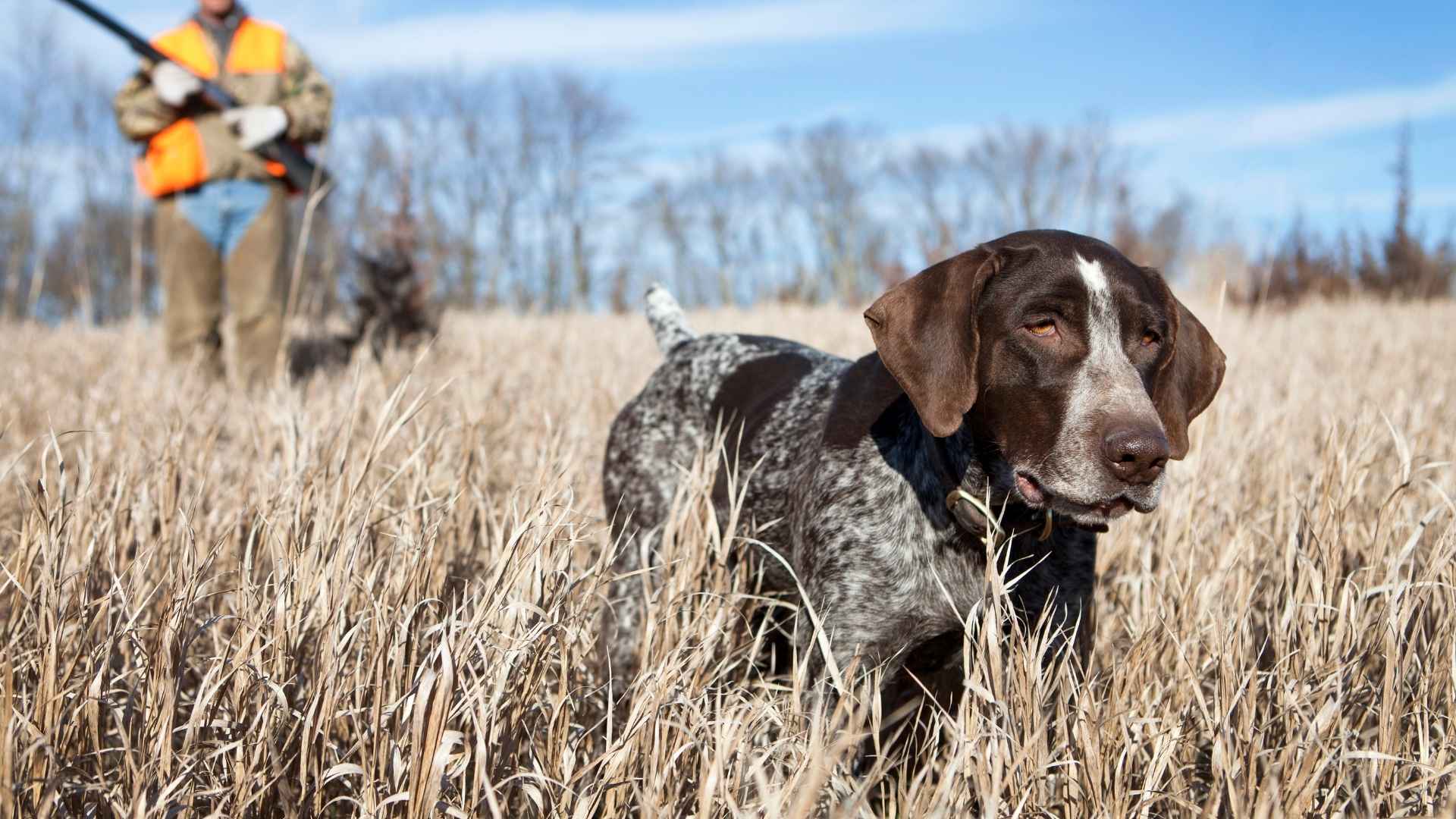Bringing home the hunt is an ancient partnership between humans and dogs, one that dates back thousands of years. Among the many roles dogs have played throughout history, one of the most remarkable is their ability to retrieve prey—often carrying it delicately back to their humans without leaving so much as a scratch.
These breeds were carefully developed for their soft mouths, patience, and obedience, making them ideal companions for hunters who needed every bird or rabbit brought back intact. Whether working in the marshes, fields, or forests, they blend skill, instinct, and cooperation, turning a hunting trip into a seamless team effort.
But their talents don’t stop at the hunt. These dogs often bring that same gentleness into their homes, becoming loyal family members who know when to be careful and when to spring into action. In this article, we’ll explore the breeds that masterfully combine strength and tenderness—the ones that can track, retrieve, and carry without harm.
Dog Breeds That Drag Small Prey Gently To Hunters
1. German Shorthaired Pointer
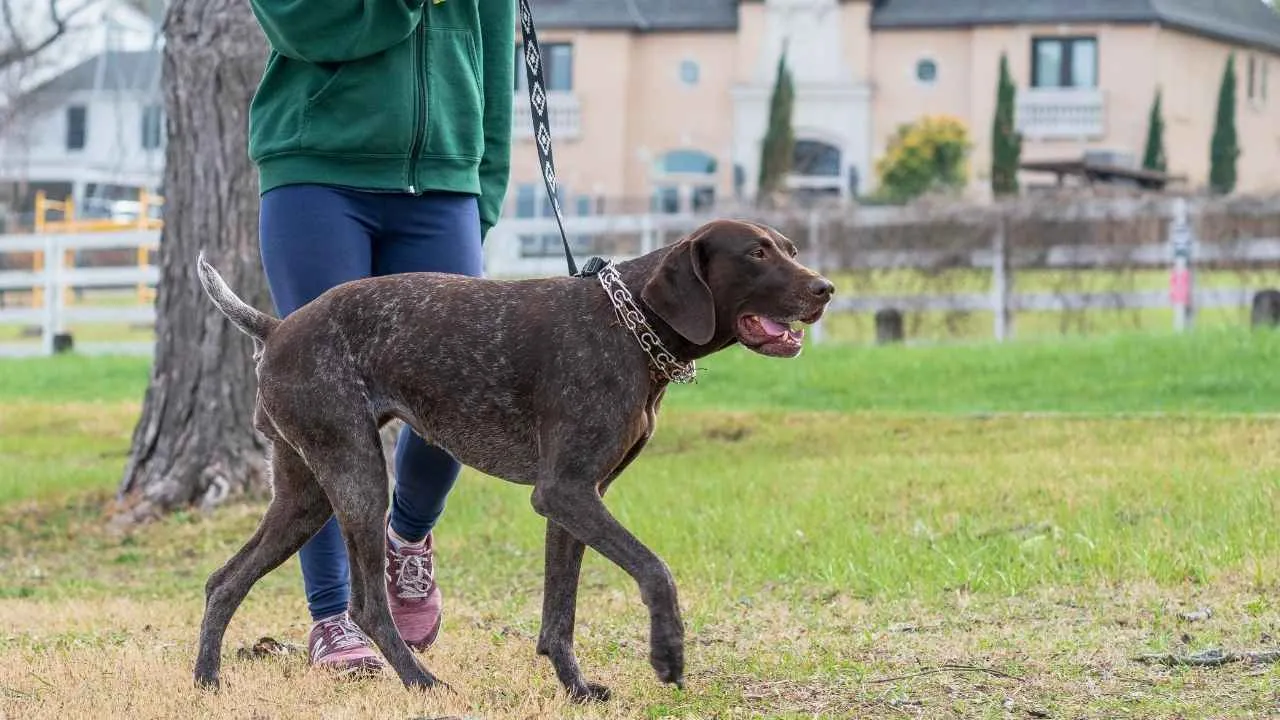
The German Shorthaired Pointer (often called GSP) is one of the most celebrated hunting breeds, known for seamlessly blending athleticism with intelligence. The AKC states that their dark eyes gleam with warmth and eagerness.
Originating in 19th-century Germany, this breed was designed as an all-purpose hunting dog—adept at pointing, retrieving, and tracking both upland birds and waterfowl. Adults typically stand 21–25 inches tall and weigh between 45–70 pounds
Their short, dense, water-resistant coats, often in liver or liver-and-white patterns, repel burrs and debris, making them easy to maintain after long hunts. Broad, floppy ears frame their noble, alert face, and their lean frame embodies speed, agility, and stamina. GSPs belong to the sporting group and generally live 12–14 years, thriving in active homes that match their boundless energy.
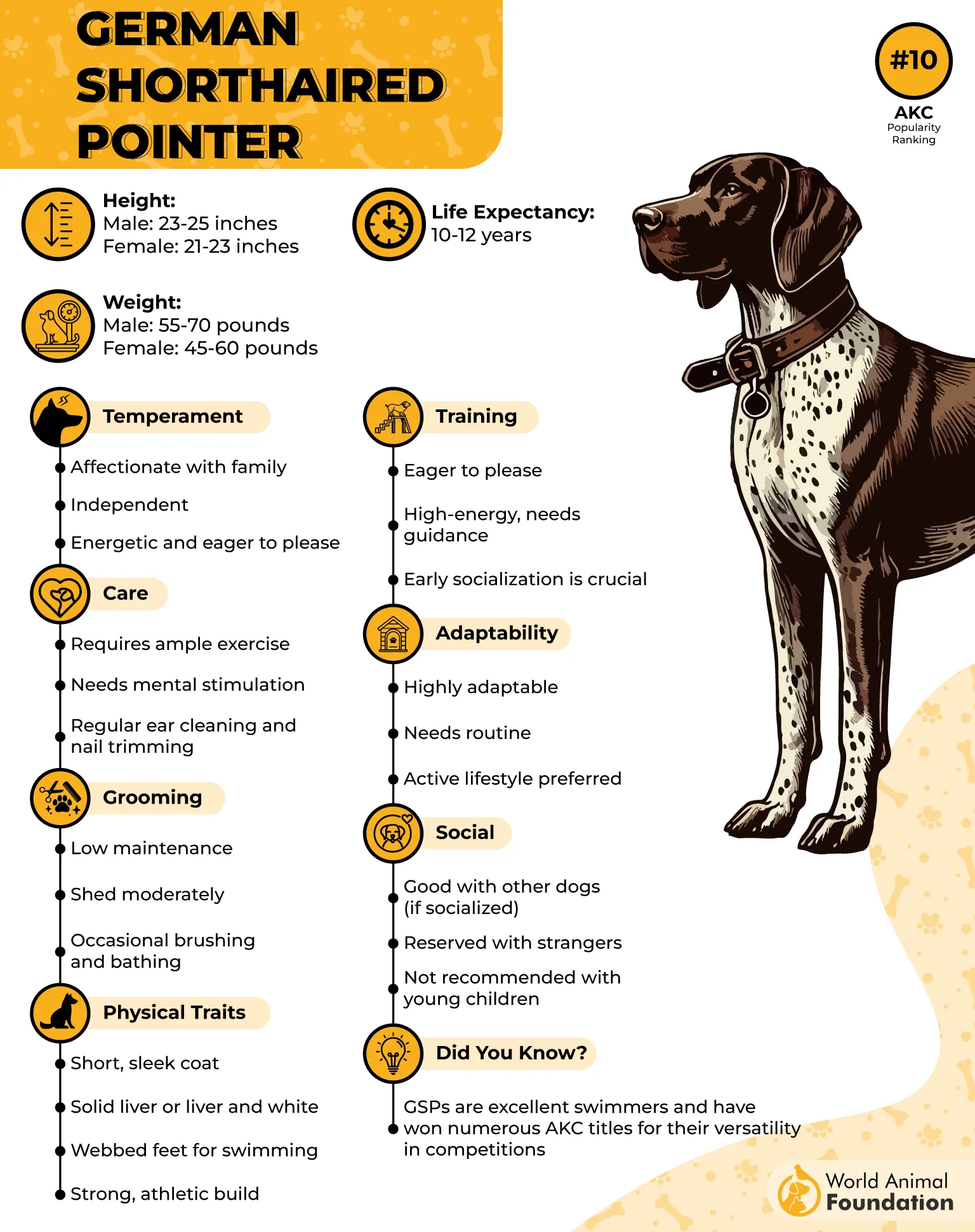
Unique Traits
GSPs are prized for their remarkable versatility—as comfortable flushing pheasants in open fields as they are retrieving ducks from icy ponds. Hunters admire how they naturally stay within range on foot and how their coats shed dirt while still keeping them warm in late-season cold.
Known for being biddable and easy to train, they develop strong bonds when raised indoors, transitioning from tireless field workers to affectionate companions without effort.
Fun Fact: Some GSPs are so adaptable that they’ve been used for both daytime pheasant hunts and nighttime raccoon tracking—a rare dual talent in the hunting world.
2. Golden Retriever
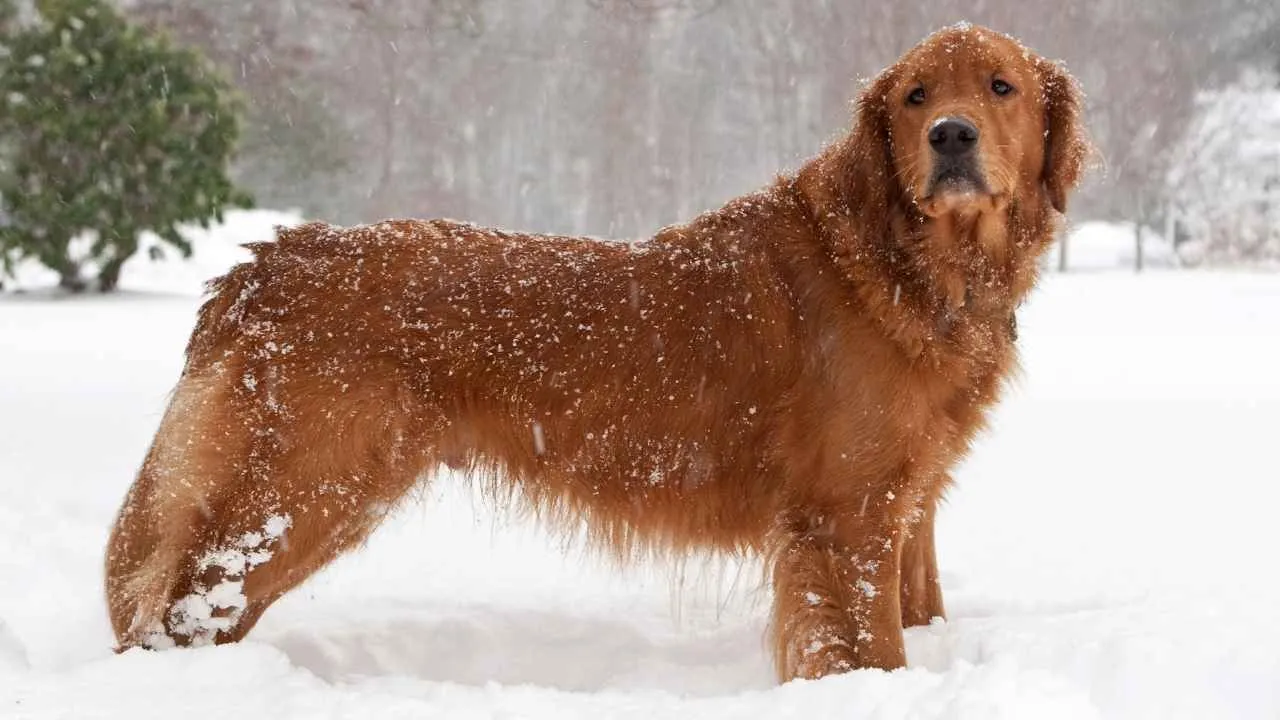
Originating in the Scottish Highlands during the 19th century, the Golden Retriever—often simply called the “Golden”—was developed by Lord Tweedmouth by combining breeds like the Tweed Water Spaniel and Irish Setter. His goal was to create a hunting companion that could retrieve waterfowl and upland game with equal ease while maintaining a calm, sociable demeanor.
Standing around 21.5 to 24 inches and weighing between 55 and 75 pounds, Goldens are muscular yet graceful, with a signature shimmering coat that ranges from pale cream to rich gold. WebMD reports that males typically stand 23 to 24 inches tall at the shoulder and generally weigh between 67 and 75 pounds.
Classified in the Sporting Group, they boast a life span of about 10 to 12 years. Their steady temperament and versatility have made them one of the most beloved breeds for hunters and families alike.

Unique Traits
Golden Retrievers excel at soft-mouthed retrieval—delicately carrying game birds without damaging them. They are also strong swimmers, thanks to their water-resistant double coat and webbed feet, and possess a remarkable “never-quit” attitude in the field. Their intelligence and eagerness to please make them ideal not only for hunting but also for roles as service and search-and-rescue dogs.
Did you know? Every Golden Retriever alive today can trace its lineage back to a single 1868 litter born at Guisachan House in Scotland.
3. Bloodhound

The Bloodhound—also known as the St. Hubert Hound—is a legendary scent tracker with origins tracing back to the monastery of St. Hubert in Belgium. PetMD notes that their strong tracking instincts can sometimes lead to trouble around the house.
Standing between 23–27 inches tall and weighing 80–110 pounds, this hound’s signature look features long, pendulous ears, deep wrinkles, and soulful eyes.
Their short, sleek coats come in black-and-tan, liver-and-tan, or red. Bloodhounds belong to the hound group and typically live 10–12 years, prized by hunters and law enforcement alike for their unmatched scenting abilities.
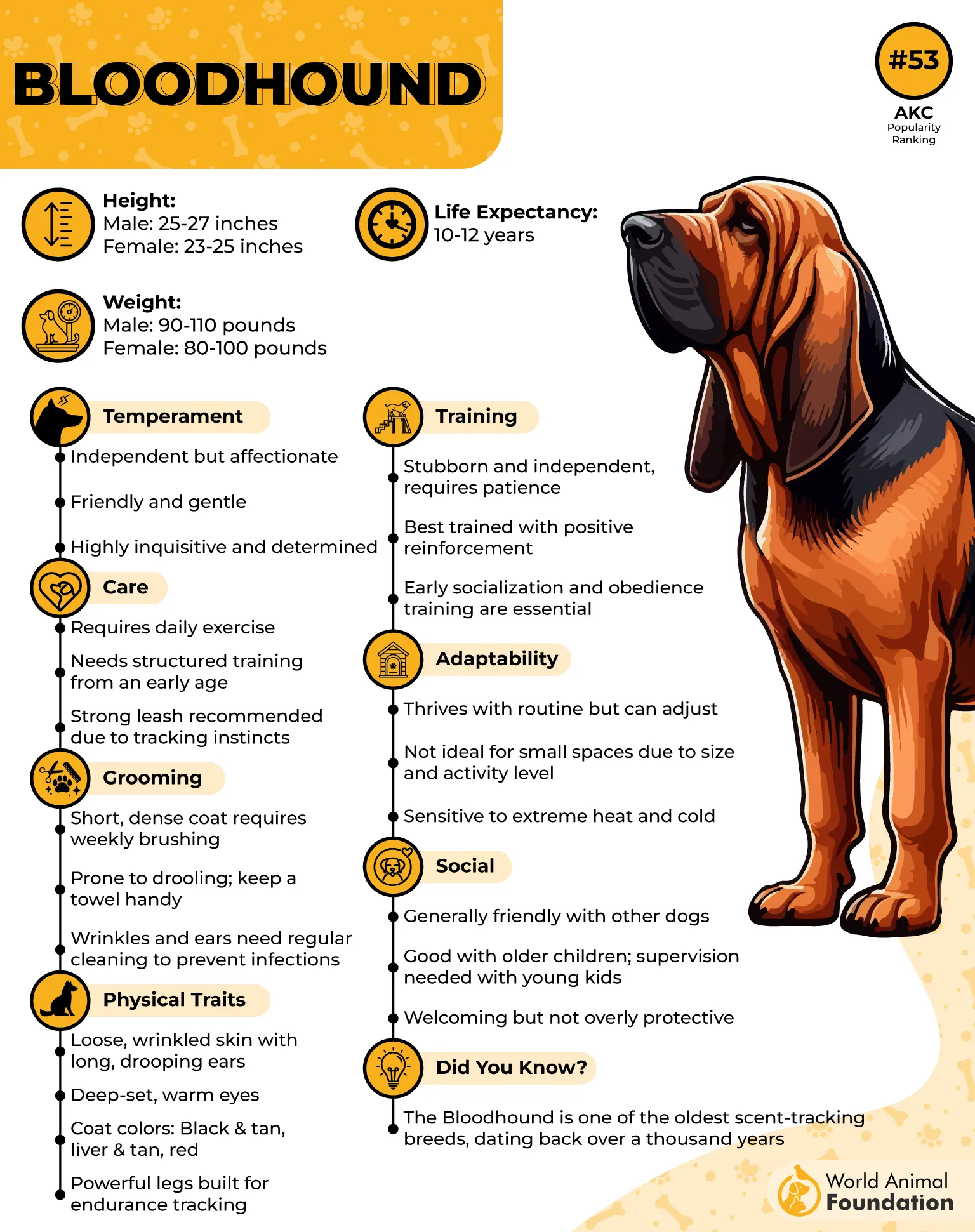
Unique Traits
The Bloodhound’s olfactory system is so advanced that it can follow trails over days and miles, sometimes even holding up in court as evidence in criminal cases. Their loose facial skin funnels scent particles toward their powerful nose, while their long ears sweep trails toward it.
Despite their size and strength, Bloodhounds are famously gentle, especially with children, and rarely show aggression, making them a dual-purpose companion: relentless tracker in the field and affectionate friend at home. They become wonderful companion dogs.
Fact: A Bloodhound’s nose contains roughly 230 million scent receptors—more than any other breed.
4. American Foxhound
The American Foxhound, sometimes referred to simply as the Foxhound, is one of America’s oldest sporting breeds, tracing its lineage to English foxhounds imported in the 1600s and later refined by George Washington himself.
Bred to chase foxes and hares across rugged landscapes, this lean, long-legged hound stands about 21–25 inches tall and weighs 60–70 pounds. Its narrow chest, domed skull, and long muzzle make it instantly recognizable, while its short tri-colored coat of black, tan, and white is both practical and striking.
Known for endurance and speed, the American Foxhound thrives in active hunting circles and is classified in the Hound Group by the American Kennel Club.
Unique Traits
With a nose that can follow a scent trail for over 24 hours, the American Foxhound is a relentless tracker. Despite its hunting grit, it is notably gentle and docile, often showering its family with affection. This breed is also a natural singer, producing the famous “hound music”—a melodic baying heard for miles when it’s on a scent.
Did you know? Virginia named the American Foxhound its official state dog back in 1966.
5. Plott Hound
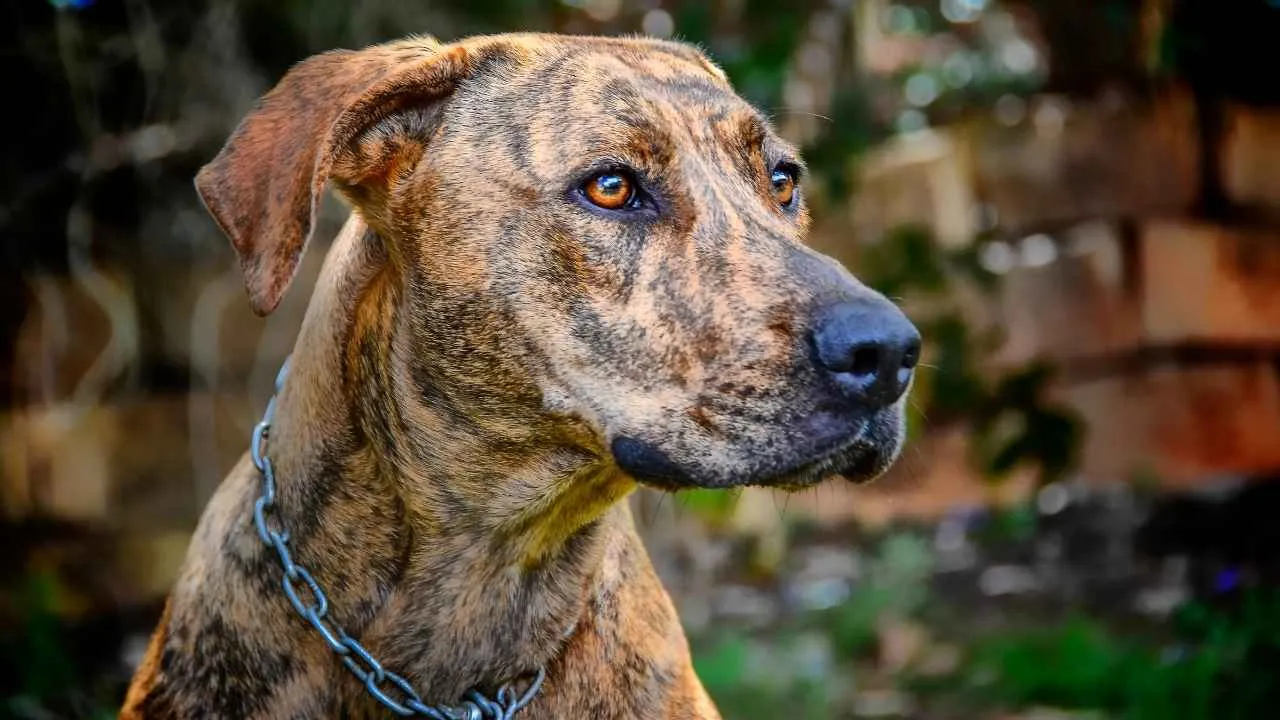
The Plott Hound, sometimes simply called the Plott, is North Carolina’s official state dog and the only coonhound breed not originating from English stock.
Developed in the 1750s by Johannes George Plott, who brought German bloodhounds to the Smoky Mountains, these brindle-coated hounds were refined for centuries to pursue bears and wild boars.
Standing around 21–26 inches tall and weighing roughly 40–60 pounds, they’re medium-framed but remarkably powerful, with a sleek, glossy coat that hints at their athleticism. Fierce hunters in the field, Plotts are known for working rugged hillsides and sorting out complex scent trails with confidence and grit.
Unique Traits
Unlike many hounds, Plott Hounds combine stamina with a fearless drive to confront even large prey, from mountain lions to black bears. They become great family pets.
They’re deeply loyal, protective of their families, and remarkably social—traits that make them devoted companions when not on the trail. Their bold yet steady temperament has made them legends among big-game hunters.
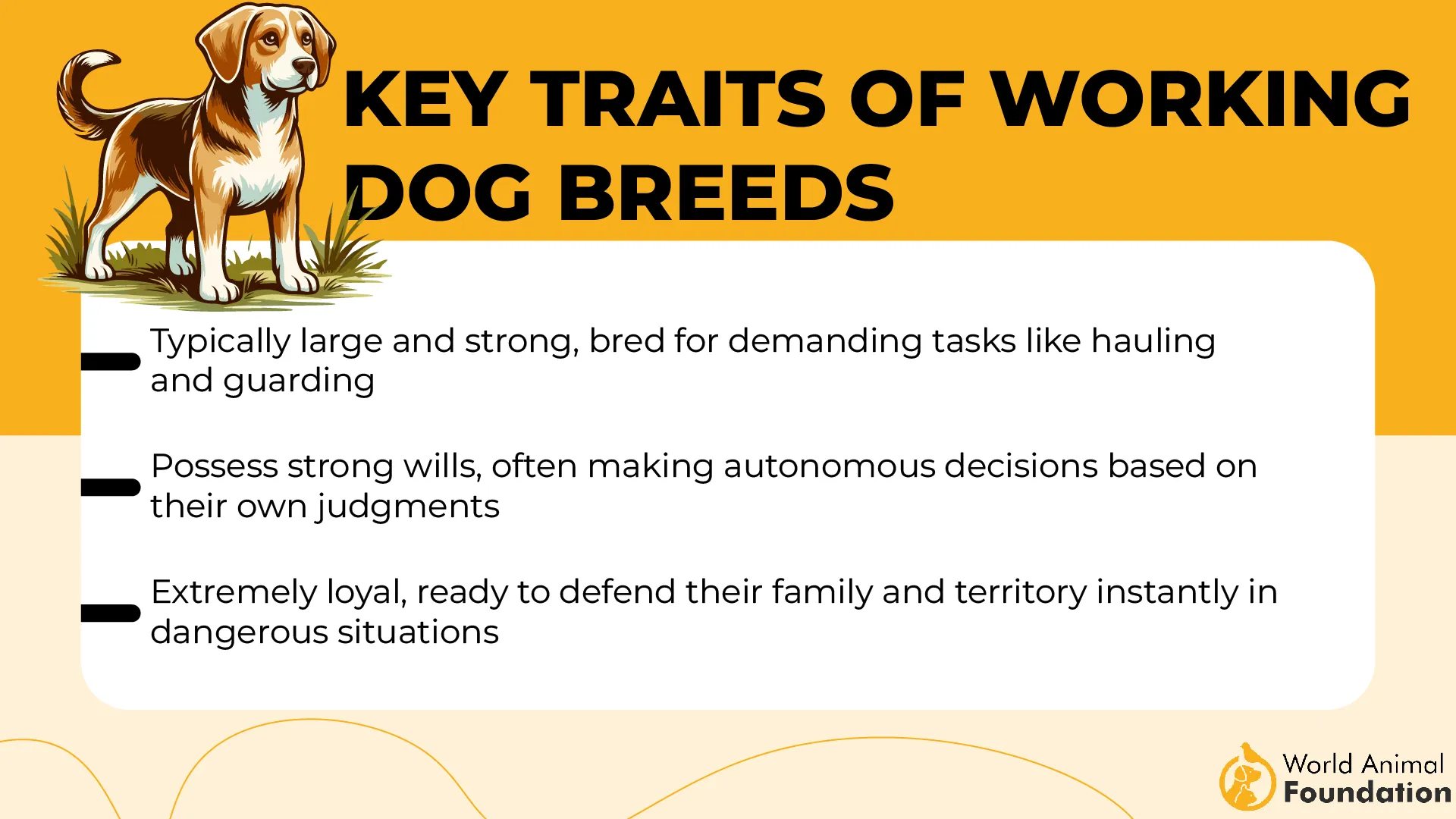
Fun fact: The Plott Hound’s brindle pattern is so iconic that nearly all members of the breed display it, sometimes with a striking black saddle across their back.
6. Chesapeake Bay Retriever
The Chesapeake Bay Retriever, affectionately called the Chessie, originated in the U.S. in the 19th century when English stock was originally bred for waterfowl retrieval. These rugged dogs stand 21–26 inches tall and weigh 55–80 pounds, with males at the upper end.
They are powerfully built with a distinctive oily, wavy coat in shades of chocolate, sedge, or deadgrass that protects them in icy waters. Chessies aren’t as outwardly friendly as Labradors or Goldens—they are more reserved, protective, and independent, making them excellent watchdogs as well as premier hunting partners.
Unique Traits
Chessies are renowned for unyielding determination; they’ll push through freezing waters and rough terrain to bring back ducks, geese, or even wounded game.
Their deep loyalty is legendary—while other retrievers may love everyone, a Chesapeake bonds tightly to “their” person, following them like a shadow. They are also highly intelligent and quick learners, but this sharp mind means they get bored easily, requiring consistent, creative training to keep them engaged.
Fun fact: Commercial duck hunters of the late 1800s prized Chessies so highly that they were the breed of choice for hauling in birds for the restaurant and market trade.
7. Beagle
The Beagle, affectionately called the “Hound,” hails from Great Britain and has long been a favorite for both companionship and hunting. They are one of the best hunting dog breeds. Small yet sturdy, it resembles a miniature foxhound, boasting soulful brown eyes, floppy ears, and a tri-colored coat of black, tan, and white.
Traditionally used for beagling—tracking rabbits and hares—this hound’s compact size (13–15 inches tall, 20–30 pounds) made it invaluable to hunters weaving through dense brush. With a lifespan of 10–15 years, the Beagle is lively and affectionate, known for its tireless energy in the field and its easygoing nature at home.
Unique Traits
Beagles are famous for their exceptional scenting ability, second only to the Bloodhound. Their “open-throated” bay, derived from their name’s French root begueule, carries across fields, signaling a find. True pack dogs, they thrive when working alongside others and can be surprisingly single-minded when following a trail. Their history includes lines of “glove” and “pocket” Beagles so small they once fit in saddlebags.
Did you know? The U.S. Customs and Border Protection employs a “Beagle Brigade” at airports to detect banned foods and agricultural products, and Snoopy—the beloved cartoon icon—was based on Charles Schulz’s childhood Beagle.
Conclusion
When it comes to hunting partners with a gentle touch, there’s nothing quite like the right dog at your side. From retriever breeds known for their soft mouths to hound breeds bred for tracking, these dogs excel at bringing back game without damaging it. Whether it’s hunting rabbits, gathering a few ducks, or helping to point upland birds, they blend instinct, training, and trust to deliver their quarry carefully to hand.
Many Labrador Retrievers, bird dogs, and other retriever breeds have been refined over generations to perform this role flawlessly. Farmers, hunters, and trainers alike value herding dogs and tough dogs that can work hard while remaining gentle when needed.
While such breed distinctions set them apart, the shared goal remains the same—to produce dogs capable of handling game with respect. Alongside other dogs who serve similar roles, they are the unsung heroes of the field, ensuring every hunt ends with skill, care, and partnership.


